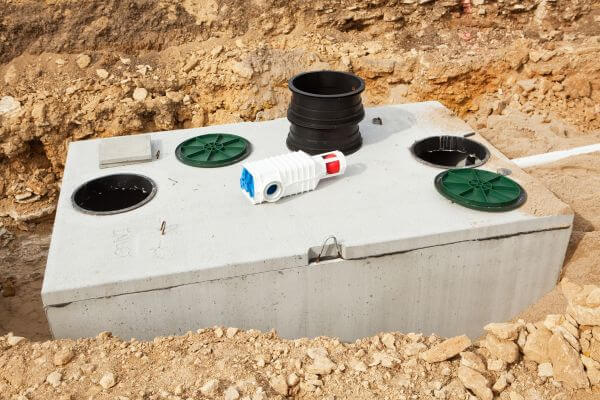Current regulations in Spain on septic tank ventilation
General legal requirements
Spanish legislation requires septic tanks to be installed in accordance with European Directive 91/271/EEC and Royal Decree 606/2003, which requires ventilated systems and maintenance records. Law 22/2011 and Royal Decree 140/2003 complement this legal framework in rural and urban areas.
Technical standard (UNE-EN 12566-1)
This standard establishes:
-
Mandatory top ventilation via properly connected vertical pipe
-
Sufficient height for dispersion in inhabited areas
-
Odour filters or forced ventilation in sensitive environments
In autonomous communities such as Valencia, these conditions are also set out in local decrees, especially for homes without connection to public networks.
Benefits of adequate ventilation
Odour reduction
Well-designed ventilation removes gases such as hydrogen sulphide, preventing unpleasant odours inside the home or outside areas. Our guide on what to do to prevent septic tank odours offers practical solutions. .
Prevention against toxic gases
Gases such as methane and hydrogen sulphide are flammable and dangerous; a ventilated system prevents their accumulation and avoids respiratory risks or explosions.
Improvement of the biological process
Proper ventilation maintains ideal pressure, temperature, and oxygenation for the anaerobic bacteria that treat organic waste, optimising their biological performance.
Types of ventilation in septic tanks
Natural ventilation
This is done using a vertical PVC pipe that carries gases to the outside. It is the most common and economical method, suitable for isolated pits and well-ventilated sites.
Forced ventilation
Use electric fans or extractors. This is ideal when natural ventilation is insufficient, for example in pits near homes or in humid climates.
Good design and installation practices
Correct location and dimensions
Pipes must protrude above roofs or more than one metre above inhabited areas. The T-shaped elbow must be located in the upper part of the outlet or inlet to allow natural ventilation.
Accessibility and maintenance
The installation must include accessible registers so that it can be visually inspected or odour filters installed without dismantling or interfering with the system.
Use of anti-odour filters
In sensitive environments, the use of activated carbon or biological filters is recommended to neutralise gases before they are released.
Technical and legal compliance
There must be a technical project signed by an engineer and municipal licences. In the Valencian Community, for example, it is mandatory to apply for authorisations from the corresponding Hydrographic Confederation.
Recommendations for users and communities
-
Check for adequate ventilation; if there is a persistent odour or gas, you should request an immediate inspection.
-
Only trust certified professionals for installation and maintenance.
-
If your system does not have ventilation or has detected problems, consider checking an existing pit or adding odour filters.
You can also review our cleaning and maintenance services in the septic tank emptying section to ensure that your system is in optimal condition.
Frequently asked questions
Is ventilation mandatory in all septic tanks?
Yes, according to the regulations, it is essential to ensure safety, biological efficiency and avoid penalties.
How far should the ventilation pipe protrude?
It must be raised above the roof or 1 metre above inhabited areas to ensure proper gas dispersion.
Can ventilation be added to an existing pit?
Yes, through technical adaptation, vertical ventilation or carbon filters can be installed even in pits that are already operational.
How often should vents be checked? We recommend at least one inspection per year and emptying every 3–5 years in case of regular use, according to the guide on when to empty a septic tank.
Why choose Limpiezas Domingo in Marina Alta?
At Limpiezas Domingo we offer:
-
Installation or correction of ventilated systems in accordance with regulations
-
Professional inspection and cleaning of septic tanks
-
Installation of anti-odour filters if necessary
-
Technical projects and legalisation
Contact us if you need to assess or improve the ventilation of your septic tank in Dénia, Xàbia, Calp or any of the surrounding towns.
A properly functioning ventilation system is key to health, biological efficiency, and environmental comfort. If your septic tank lacks adequate ventilation, take action now to prevent odours, toxic gases, and possible penalties.
At Limpiezas Domingo, we offer technical inspections and comprehensive solutions.
Request a no-obligation inspection today and protect your installation.

